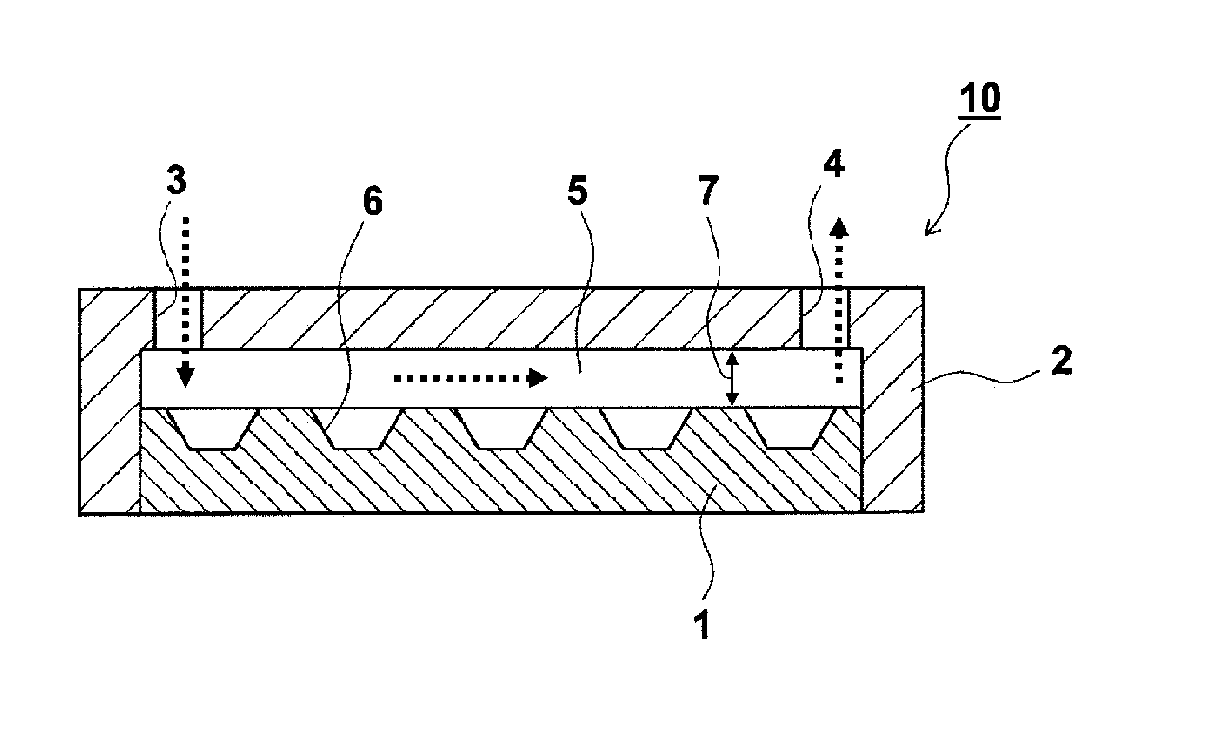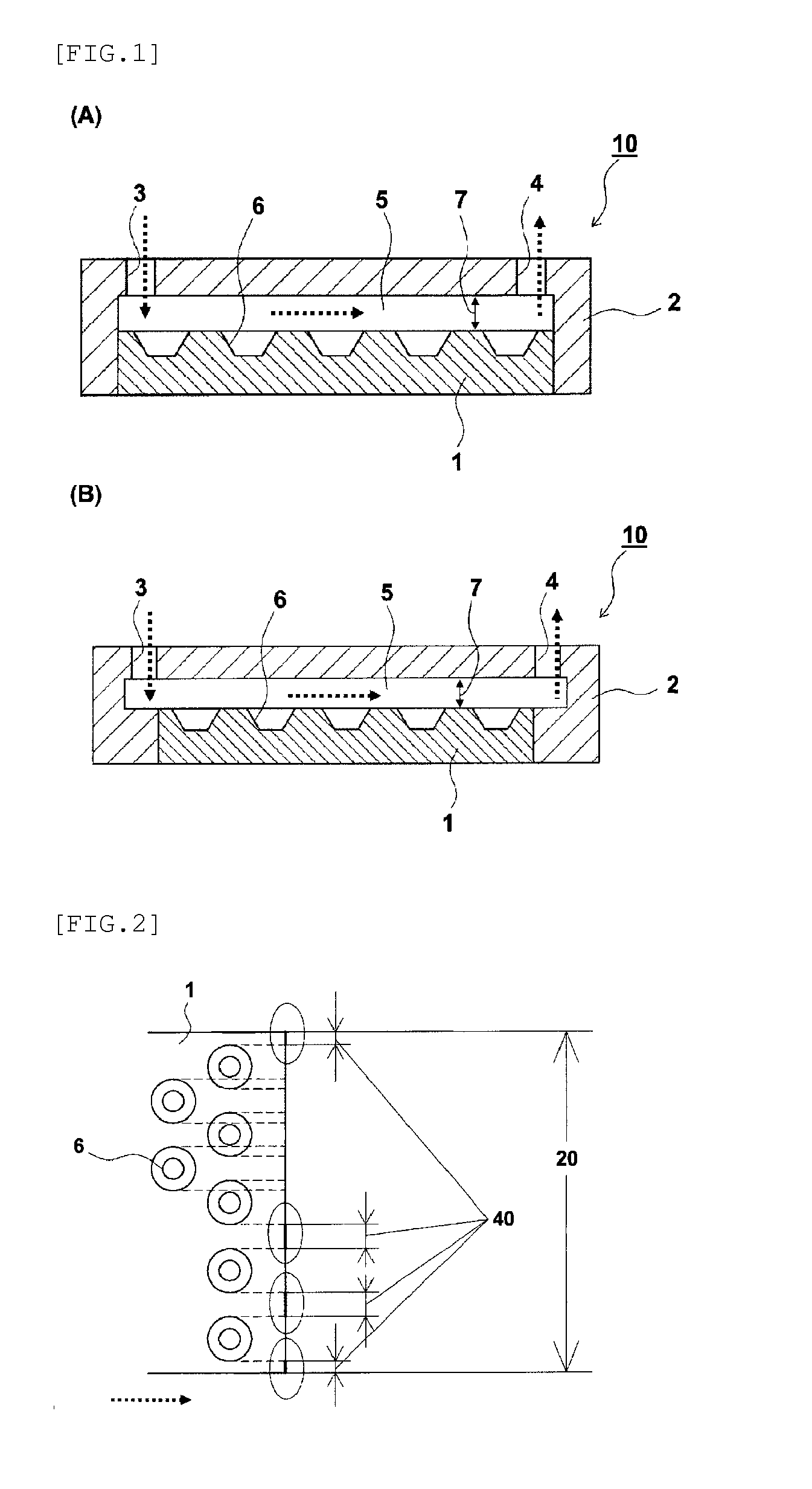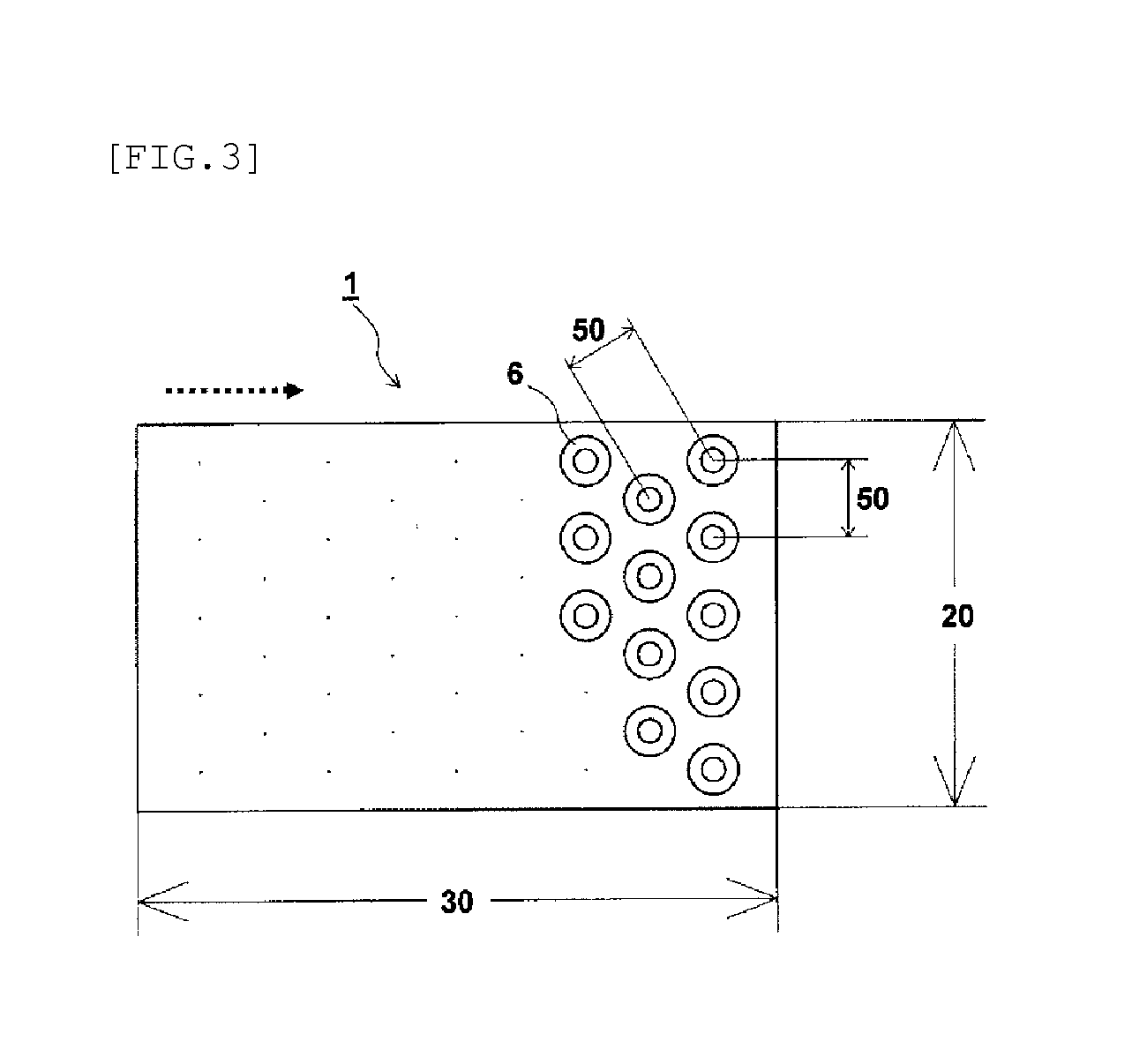Cell-spreading device and method for detecting rare cell
- Summary
- Abstract
- Description
- Claims
- Application Information
AI Technical Summary
Benefits of technology
Problems solved by technology
Method used
Image
Examples
example 1
[0061]A microchamber chip (made of polyethylene and produced using a given mold) having microchambers (6) arranged as shown in FIG. 5(D) was used for a cell-spreading device. The microchambers of the microchamber chip each had a diameter of 100 μm, a depth of 50 μm and an inverse conical shape having a flat bottom. The pitch indicating a distance between the centers of the adjacent microchambers was 200 μm, and the void ratio was 0%. The longitudinal width and the lateral width of the microchamber chip were 25 mm and 70 mm, respectively, and the channel of the cell-spreading device had a height of 100 μm, a width of 15 mm and a length of 40 mm. That is to say, the sectional area of the channel of the cell-spreading device was 1.5 mm2, and the volume of the channel was 60 mm3 (=0.06 mL).
[0062]In the first place, the channel of the cell-spreading device was filled with PBS containing 3% by weight of bovine serum albumin [BSA] (also referred to as “3% BSA-containing PBS” hereinafter). ...
example 2
[0065]A recovery ratio of cells was determined in the same manner as in Example 1, except that the void ratio of the microchamber chip was changed to 1% or 5%. The intermittent liquid sending was further carried out another 10 times (total: 20 times), and a recovery ratio of cells was determined. The results are set forth in Table 1.
PUM
 Login to View More
Login to View More Abstract
Description
Claims
Application Information
 Login to View More
Login to View More - R&D
- Intellectual Property
- Life Sciences
- Materials
- Tech Scout
- Unparalleled Data Quality
- Higher Quality Content
- 60% Fewer Hallucinations
Browse by: Latest US Patents, China's latest patents, Technical Efficacy Thesaurus, Application Domain, Technology Topic, Popular Technical Reports.
© 2025 PatSnap. All rights reserved.Legal|Privacy policy|Modern Slavery Act Transparency Statement|Sitemap|About US| Contact US: help@patsnap.com



